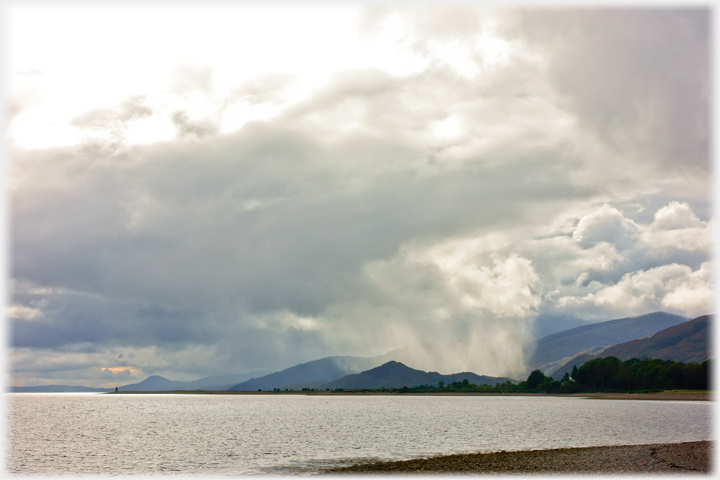
Gaia
Occasionally it is difficult to avoid talking of Gaia as if she were known to be sentient. This is meant no more seriously than is the appellation ‘she’ when given to a ship by those who sail in her, as a recognition that even pieces of wood and metal when specifically designed and assembled may achieve a composite identity with its own characteristic signature, as distinct from being the mere sum of its parts.
James Lovelock (1982)

Gaia is neither vicious nor nurturing in relation to humanity; it is a convenient name for an Earthwide phenomenon: the regulation of temperature, acidity/alkalinity, and gas composition. Gaia is the series of interacting ecosystems that compose a single huge ecosystem at the Earth’s surface. Period.
Lynn Margulis (1988)

Photos of Gaia are problematic. This is surely for the same reason that photos of the Hindu’s
Brahman,
 On Brahman.
On Brahman.
or Kant’s
noumena
 On Noumena.
On Noumena.
or the
Transcendentalist’s
 On Transcendentalism.
On Transcendentalism.
Universal Being are elusive. Highly abstract, all encompassing, utterly interconnected totalities are not photogenic. But then, seemingly, for each of these grand systems, to find a photograph of anything, is also to find a photograph of everything. Neither Lovelock nor Margulis want their concept deified: “Period.” Margulis says most emphatically. But what is the difference, once we reach this level of abstraction, between the totality of natural systems, the totality of nature, all that is, and a divine being? Language so easily carries us off with its own
momentum.
 There are many pages on this topic; for example, the way pronouns may quietly re-direct us.
Maybe when writers reach these stratospheric levels, Gaia must be seen as poetic, not taxonomic, so maybe Margulis’ insistence does ‘protest too much’?
There are many pages on this topic; for example, the way pronouns may quietly re-direct us.
Maybe when writers reach these stratospheric levels, Gaia must be seen as poetic, not taxonomic, so maybe Margulis’ insistence does ‘protest too much’?
Lovelock’s ideas appeared in the 1970s and were summarised by him (in a way he felt was more accessible) in his 1979 book Gaia - A New Look at Life on Earth. The quote is from his preface to the 2000 revision of the Oxford edition, page x. Margulis, Lovelock’s colleague, published The Symbiotc Planet - A new Look at Evolution in 1998, the quote is from page 150 of the 1999 Phoenix/Orion Books edition.
The photograph was taken from near Corran, Ardgour, in western Scotland, looking south down Loch Linnhe towards Sallachan Point. Just visible at the left is The Beacon, erected in November 1864 - maybe an appropriate reminder of the relationship humans have to Gaia: insignificant but relatively intrusive?
Above, hovering on blue introduces a link: click to go, move away to stay.

Saturday 12th April 2025
 ...guide to this site
...guide to this site